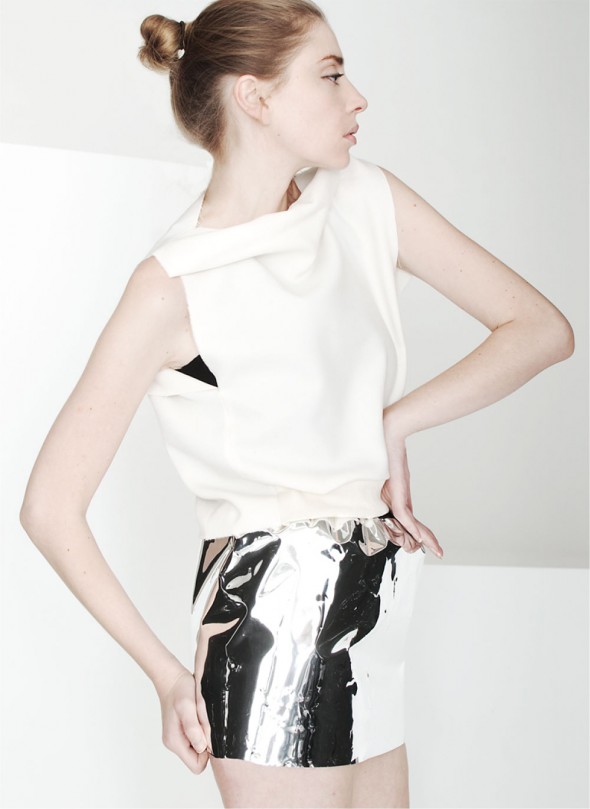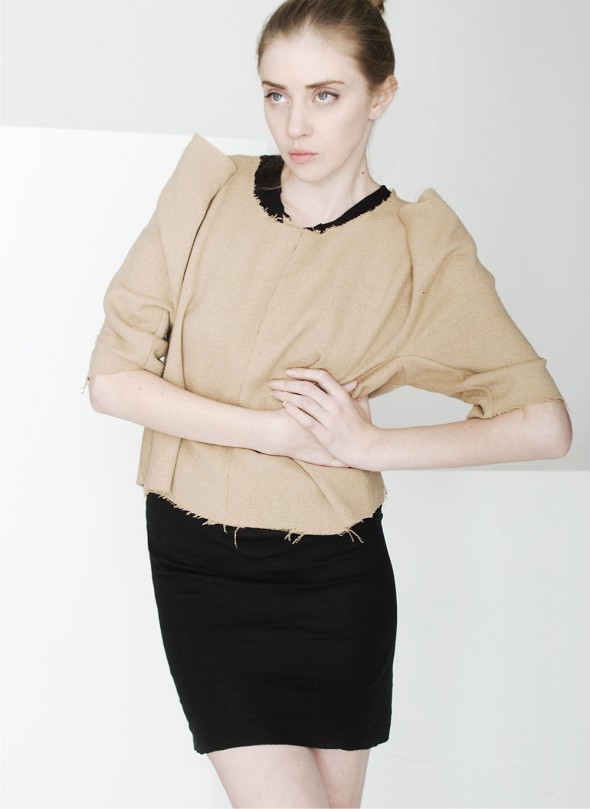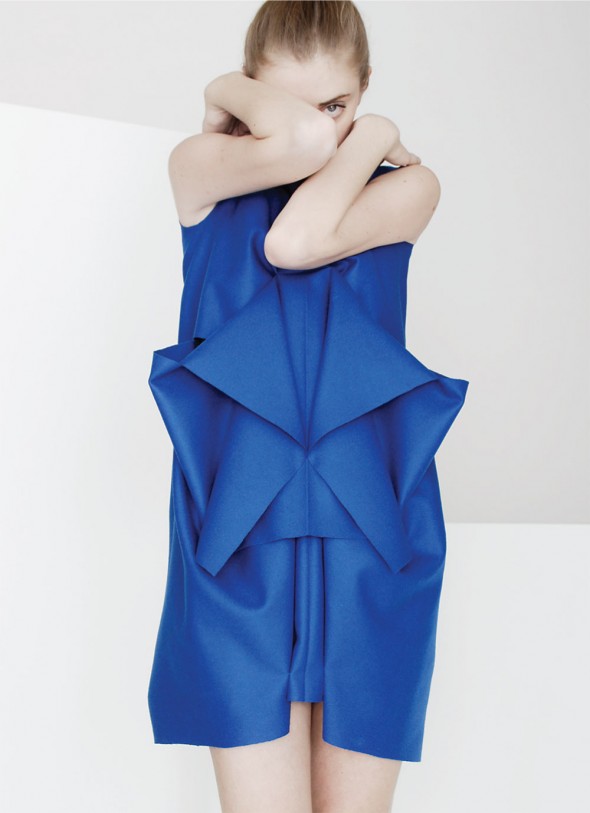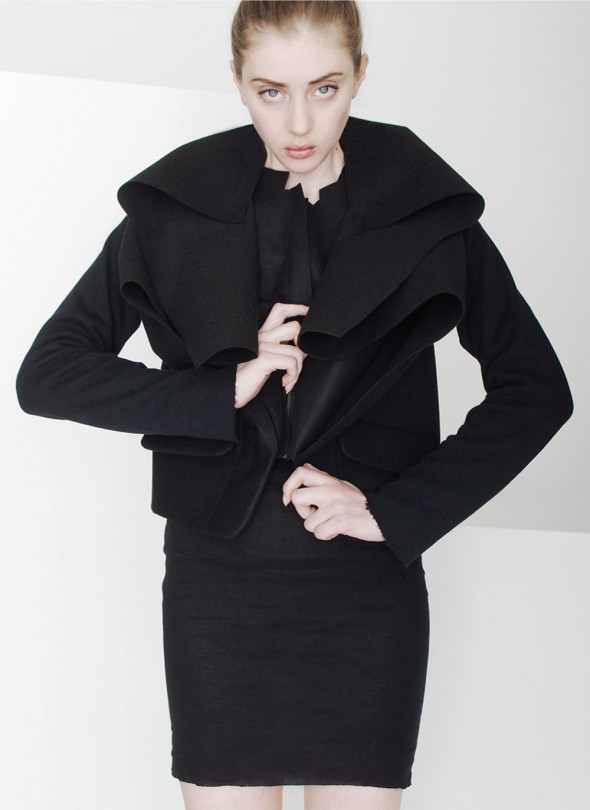Vladimir Karaleev

Born and raised in Sofia, Bulgaria, Karaleev moved to Berlin at the age of 19 to study fashion design at the University of Applied Sciences (where he was recently appointed guest lecturer). After completing his studies, in 2005 he launched his eponymous brand, with a capsule collection of experimental t-shirts entitled CUT 210. The collection follows a concept, with a set of rules previously defined by the designer: it starts with one t-shirt for the first outfit; it ends with 20, layered on top of each other (210 pieces in total). No pattern was used to design the garments; they are created with black and white thread and simple draping of fabric.
Karaleev has come a long way since then, in terms of aesthetics and techniques, but with his first effort, he has laid the foundations of his label: handmade, draping and avant-garde concepts. These features have evolved in the nine collections he has since designed, gaining a more refined sense of elegance and simplicity, turning his label into a synthesis of deconstructivism in fashion.
For AW 2010/11 he presented PRO FORMA, a collection of dresses, outerwear and separates. Meaning “as a matter of form,” the title is an expression of the aesthetic that the designer has chosen for the season: autonomy of form and shapes, “a design that is not functional nor decorative.” Also defined as antiforma, the chosen shapes don’t follow the body and don’t emphasize it. Almost prosthetic mini-dresses in luscious blue silk, black and camel wool, draped jackets and unexpected structures, with folds peeking out and abstract geometric profiles. His folding techniques, reminiscent of Japanese origami, create silhouettes that redefine the female anatomy through three-dimensional, dynamic tricks of fabric.

He approached these folding techniques for the first time while working on his SS 2010 collection: complex-looking shapes were achieved through simple folds—garments were often made with one strip of fabric, folded like an envelope. His techniques are particularly stunning when worked on the heavy fabrics of his delicate outerwear: jackets are created by folding a square of fabric—an amazing process that the designer sees as one of his major achievements. His results are fantastic: stiff, structured coats that are both elegant and conceptual, seasonal must-haves as much as versatile classics. This hands-on approach, and the belief that everything must be handmade, make Vladimir Karaleev a truly old-style luxury brand, already defined new couture.
His love for fabric and folding comes perhaps from the fact that he is admittedly color-blind: he is able to see blue (which has been featured greatly in his last collections, and in its boldest, brightest shades), but not many other shades, which makes him focus more on tactile feel rather than color when choosing materials for his collections. When color is used, it is often by mistake: Karaleev might think he is working with total black, and then a red thread pops out, giving an unexpected, and luckily fascinating, result.

Passionate about contemporary art, Karaleev is currently working on an installation project with Japanese artist Yukihiro Taguchi, exploring the relationship between fabric and textile manufacturing. Called Fabric(k), the collaboration looks into weaving processes, taking woven material to a large-scale architectural installation, “to sharpen our sensibility for the tension between strictly defined structures and more loosely configured spatial enclosures.”

His couture itself resembles a piece of art: each piece is unique, following a concept that evolves with the realization of the collections. The edges are left raw and seams unfinished, with frayed fabric being a constant detail of Karaleev’s pieces. What seems like poor editing is instead a continuation of the collection, punctuation for a following sentence, a dialogue left open for the next season.
Text Rosa Maria Bertoli
Phototography Jonas Lindström

